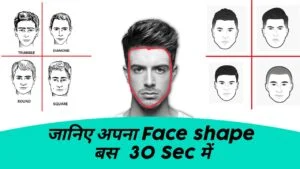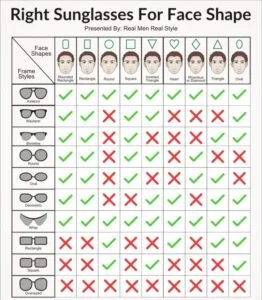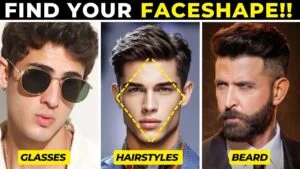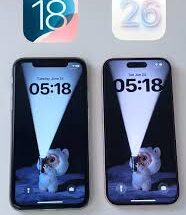Have you ever tried a new hairstyle or a pair of sunglasses that looked amazing on someone else, but didn’t suit you the same way? That might be because of your face shape. Understanding your face shape can significantly impact your styling choices—from haircuts to makeup and accessories. It’s not just a beauty tip; it’s a confidence boost waiting to happen.
In this guide, we’ll walk you through everything you need to know about how to find your face shape, why it matters, and how to use this knowledge to enhance your personal style.
What is the How to Find Your Face Shape?
“How to Find Your Face Shape” refers to the process or methods used to determine the natural structure of your face. It’s about identifying the contours and proportions—like the width of your forehead, jawline, and cheekbones—to match them to one of the common face shapes.

There are six primary face shapes:
- Oval
- Round
- Square
- Heart
- Diamond
- Oblong (Rectangle)
Each shape has unique characteristics, and finding yours can help guide your choices in fashion, makeup, and even selfie angles.
How How to Find Your Face Shape
Finding your face shape is simpler than it sounds. Here’s a step-by-step method you can try at home:
Step 1: Tie Your Hair Back
Remove any distractions by pulling your hair away from your face. A headband or ponytail works great for this.
Step 2: Use a Mirror and Good Lighting
Stand in front of a mirror with bright, natural light. A selfie also works if taken straight-on.
Step 3: Measure Your Face
Using a flexible measuring tape or even a ruler, note the following:
- Forehead width: Measure across the widest part.
- Cheekbone width: From the outer corner of one eye to the other.
- Jawline: Measure from the tip of your chin to below your ear. Multiply it by two.
- Face length: From your hairline to the bottom of your chin.
Step 4: Analyze Your Measurements
Compare your measurements and match them with the common face shapes:
| Face Shape | Key Characteristics |
|---|---|
| Oval | Forehead is slightly wider than the chin. Face length is longer than width. |
| Round | Cheeks are the widest part. Face length and width are similar. |
| Square | Jawline is prominent and square. All measurements are fairly equal. |
| Heart | Forehead is wider than the jawline. Pointy chin. |
| Diamond | Cheekbones are widest. Narrow forehead and chin. |
| Oblong | Face is longer than it is wide. Straight cheeks. |
Features of How to Find Your Face Shape [Completely Detailing]
When identifying your face shape, several features are examined. Here’s a complete breakdown of what to look at:
1. Forehead
- Wide and prominent? You might have a heart or oval face.
- Narrow or similar in width to jawline? You may have a square or oblong shape.
2. Cheekbones
- Highest and widest point of the face indicates a diamond face shape.
- If cheeks are round and full, consider a round face shape.
3. Jawline
- A sharp, angular jawline suggests a square face.
- A narrow, soft jawline usually points to a heart or oval shape.
4. Chin
- Pointy or V-shaped? Likely a heart face.
- Rounded chin? Could be round or oval.
5. Face Length
- If the face is significantly longer than it is wide, it could be oblong or oval.
- A nearly equal length and width is common in round or square faces.
Pros of How to Find Your Face Shape [Use Table]
| Pros | Description |
|---|---|
| Personalized Style | Helps choose the most flattering hairstyles, glasses, and makeup. |
| Better Self-Awareness | Increases understanding of your natural features and proportions. |
| Boosted Confidence | Enhances self-image when styles are matched to shape. |
| Efficient Shopping | Quickly pick the right accessories, saving time and money. |
| Makeup Optimization | Highlights facial features better through contouring based on shape. |
Cons of How to Find Your Face Shape [Use Table]
| Cons | Description |
|---|---|
| Not Always Accurate | Measurement methods can be subjective or inconsistent. |
| May Feel Limiting | People might restrict style choices based on labels. |
| Changing Features | Weight changes or aging can affect perceived face shape. |
| Overemphasis on Appearance | Can promote unrealistic beauty standards. |
| Confusion with Mixed Shapes | Some faces combine traits, making categorization hard. |
How to Find Your Face Shape Alternatives [Use Table]
| Method | Description | Accuracy | Tools Needed |
|---|---|---|---|
| Manual Measurement | Use tape to measure forehead, cheeks, jawline, and length. | High | Mirror, tape/ruler |
| Online Face Shape Detector Apps | Upload photo, and app suggests your face shape. | Medium–High | Smartphone, app |
| Consultation with Stylist | Experts analyze your face shape during styling. | Very High | In-person visit |
| Face Shape Quiz | Answer questions based on your features. | Medium | Internet access |
| AI-Based Tools | Use AI software for automatic detection. | Very High | App or software |
How to Find Your Face Shape
Still unsure about your face shape? Try this simplified trick:
Mirror Drawing Method
Stand in front of a mirror with a washable marker and trace the outline of your face. Step back and observe the overall shape—it often reveals more than measurements.
Take a Photo
Snap a straight-on photo with neutral lighting. Then use it to visually compare with diagrams or upload it to a face shape detection app.
Ask for a Second Opinion
Sometimes, friends or hairstylists can offer helpful perspectives that you might overlook.
Conclusion
Finding your face shape isn’t about boxing yourself into a category—it’s about understanding your unique structure to enhance your natural beauty. Whether you’re planning a hairstyle makeover, contouring your face, or shopping for the perfect pair of sunglasses, knowing your face shape gives you an edge.
Remember, beauty is not one-size-fits-all. While face shape guidelines are helpful, the most important rule is to wear what makes you feel confident and happy.
So, take a few minutes today, grab a mirror or a measuring tape, and discover your face shape. It might just change the way you see yourself—and how the world sees you.




